When I first arrived in Stavanger, it wasn’t for adventure — it was for a university exchange program at the local hospital. As a nursing student, I spent my days immersed in clinical practice, but whenever I had free time (and especially after my program ended), I set out to explore this coastal city.
What I discovered wasn’t a flashy, overwhelming destination, but a small place with just enough natural beauty and cultural intrigue to make every free moment worthwhile.
Stavanger is modest in size and can be expensive, but it offers something unique: a balance between raw, breathtaking landscapes and cosy, walkable streets. It’s the kind of place where you can hike dramatic cliffs in the morning, stroll through colourful neighbourhoods in the afternoon, and enjoy quiet moments by the harbour at sunset.
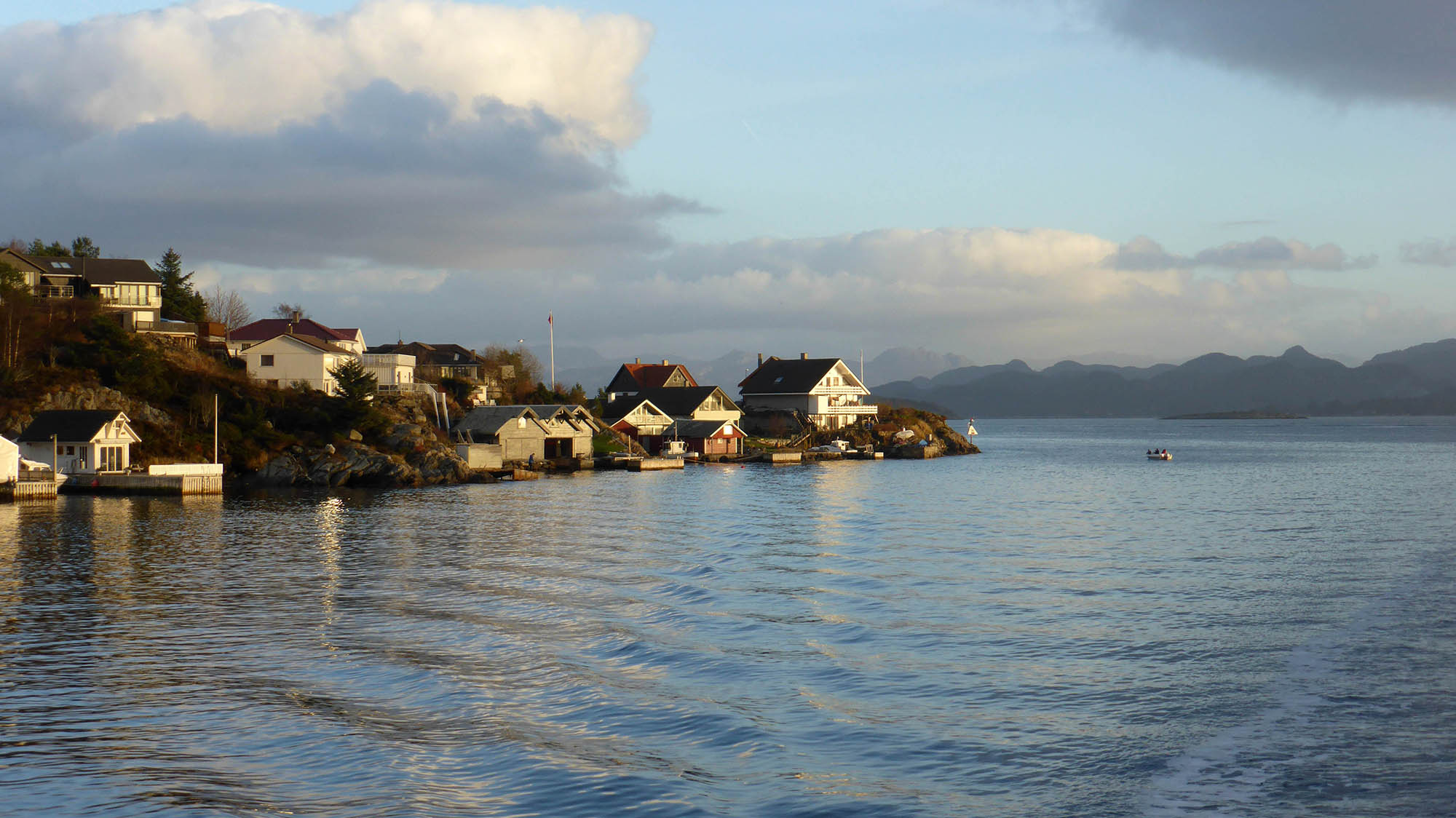
For solo travellers like me, it’s a city that invites you to slow down, reflect, and connect — with nature, with local history, and with yourself.
This guide is drawn from my time studying in and exploring Stavanger, and it’s tailored to travellers who want a meaningful experience. If you’re looking for simple but noteworthy things to do in this corner of Norway, you’re in the right place.
Disclosure: This article contains affiliate links. If you make a purchase through these links, I may earn a small commission at no extra cost to you. Thank you for supporting my blog!
Things to do in Stavanger
Stavanger is a city where dramatic landscapes meet quiet cultural treasures. From hiking iconic cliffs to exploring quaint neighbourhoods, this coastal city offers a mix of natural beauty and simple pleasures.
While it’s not overflowing with attractions, the experiences here are immersive and memorable, especially for solo travellers and others seeking a slower pace.
Here’s a selection of activities I’ve curated to help you make the most of your time in Stavanger.
1. Hike to Preikestolen (Pulpit Rock)
Imagine standing on the edge of a colossal cliff, the wind tugging at your jacket as you stare down at a sparkling fjord over 600 metres below. That’s Preikestolen (Pulpit Rock), one of Norway’s most jaw-dropping natural wonders. The cliff juts out like a preacher’s pulpit, offering a stage for adventurers to marvel at the sheer drama of the Lysefjord.
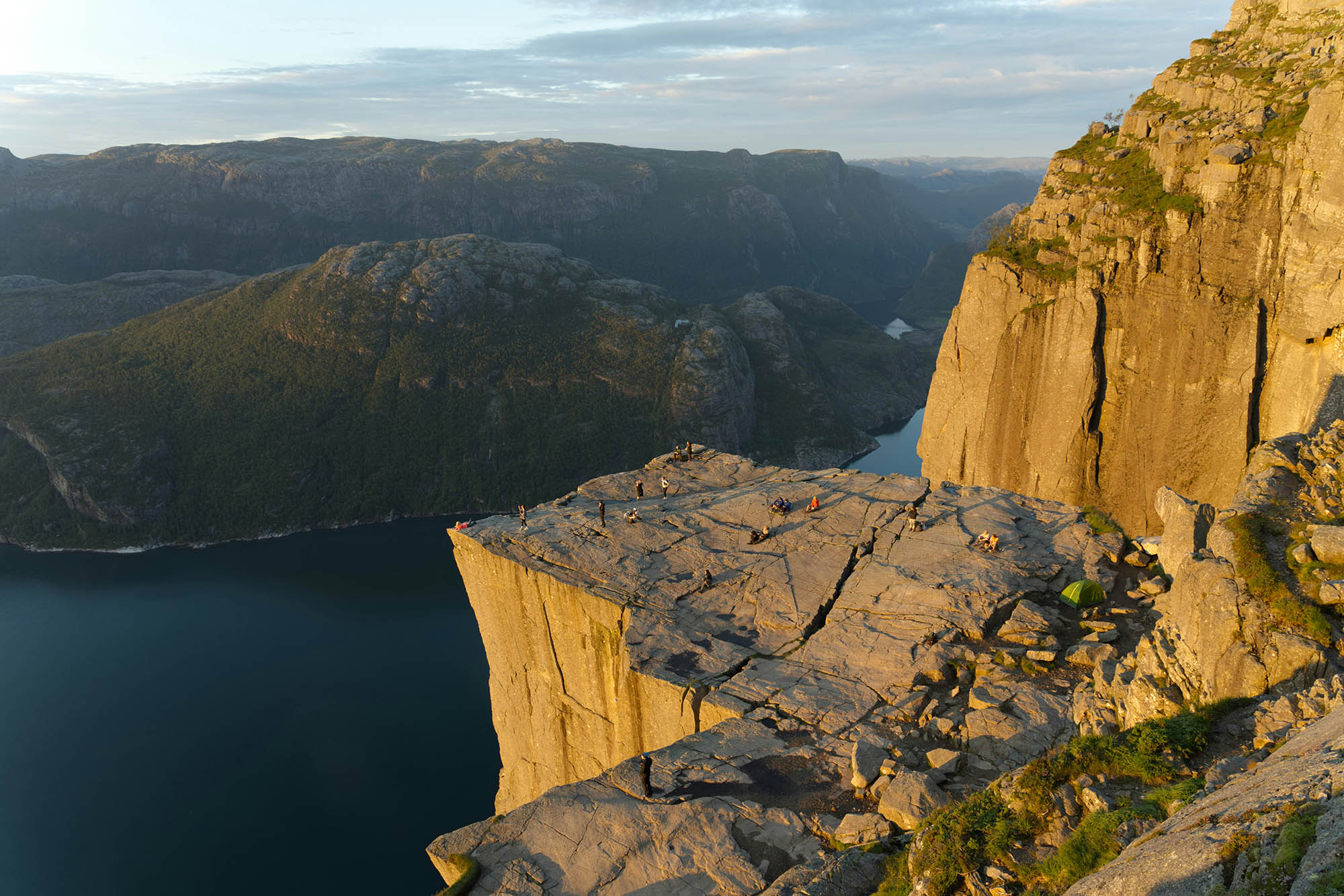
But the magic begins long before you reach the top. The 8-kilometre round-trip hike is a journey through rugged terrain, moss-covered rocks, and pine-scented air. It’s a moderate trek, manageable for most, but sturdy shoes and a reasonable level of fitness are your best allies here.
Along the way, you’ll pass tranquil lakes that mirror the sky and natural rest stops perfect for catching your breath (and snapping photos).
Practical Tips
- Getting There: The easiest way to reach the trailhead is by bus from Stavanger to the Preikestolen Basecamp.
- Timing: Go early in the morning or late afternoon to avoid crowds — sunrise and sunset hikes are especially magical!
- What to Bring: Pack water, snacks, and layers; weather can change quickly. And don’t forget a camera — you’ll want to capture this unforgettable view!
Even if you don’t tackle this hike, just knowing such a dramatic landscape is a stone’s throw from Stavanger might tempt you back someday. For those who do it, Preikestolen is more than a hike — it’s a memory etched in stone and sky.
For a unique twist on visiting Preikestolen, try the Hidden Trail Hike and Canoe Trip. This adventure combines a peaceful paddle across Lake Refsvatnet with a guided hike along a quiet, less-travelled trail, offering stunning views of Lysefjorden without the crowds. It’s an unforgettable way to experience Norway’s beauty.
➡ Click here to review, and book your spot!
2. Hike to Kjeragbolten
If standing on a boulder wedged precariously between two cliffs doesn’t give you an adrenaline rush, what will? Kjeragbolten is the daring sibling to Preikestolen, offering not just stunning views but a heart-thumping photo opportunity for the brave — or slightly reckless.
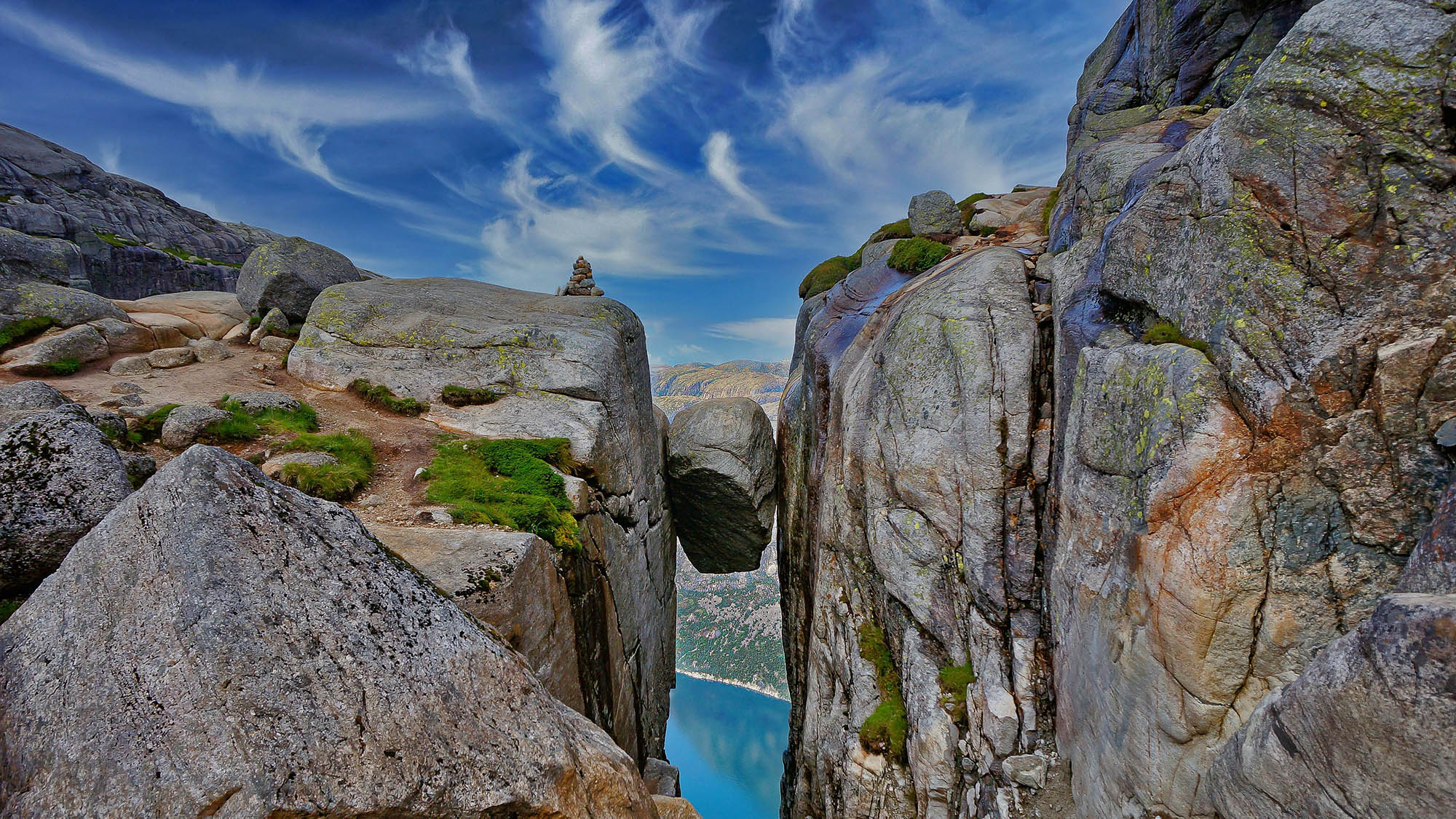
This hike isn’t necessarily a walk in the park. Spanning about 12 kilometres round trip with moderate inclines, rocky scrambles, and chains to help you along the way, it’s a little challenging but it rewards those who are up for the adventure.
But it’s not just about that famous boulder. Along the way, you’ll encounter rolling green valleys and panoramic views of Lysefjord that make the journey just as exciting as the destination.
For many, Kjeragbolten feels like the next level after Preikestolen — a little more remote, a little more demanding, and a lot more thrilling. And if you don’t feel like stepping onto the boulder for that gravity-defying shot? Don’t worry — watching others nervously shuffle onto it can be just as entertaining.
Practical Tips
- Getting There: From Stavanger, take the Kjerag Express Bus to Øygardstølen, the starting point of the hike.
- Level of Difficulty: This hike is a little more strenuous than Preikestolen, so proper hiking gear and a decent fitness level are essential.
- Timing: Possible during the summer months (June to September) when the trail is clear and the weather is more predictable.
- What to Bring: Sturdy hiking boots, snacks, water, and layers — you’ll be working up a sweat but also exposed to sudden gusts of wind at the top.
Kjeragbolten is the kind of hike that rewards both your body and your sense of adventure. Whether you’re there for the stunning views, the challenge, or that Instagram-worthy shot, this is an experience you won’t forget.
3. Take a boat trip to Lysefjord
Lysefjord was one of my favourite experiences. Picture this: steep granite cliffs plunging into calm, deep-blue waters, waterfalls cascading like silver threads, and the occasional curious seal sunbathing on a rock. I remember sitting back on the boat, letting the scenery wash over me as we floated deeper into the fjord’s embrace.
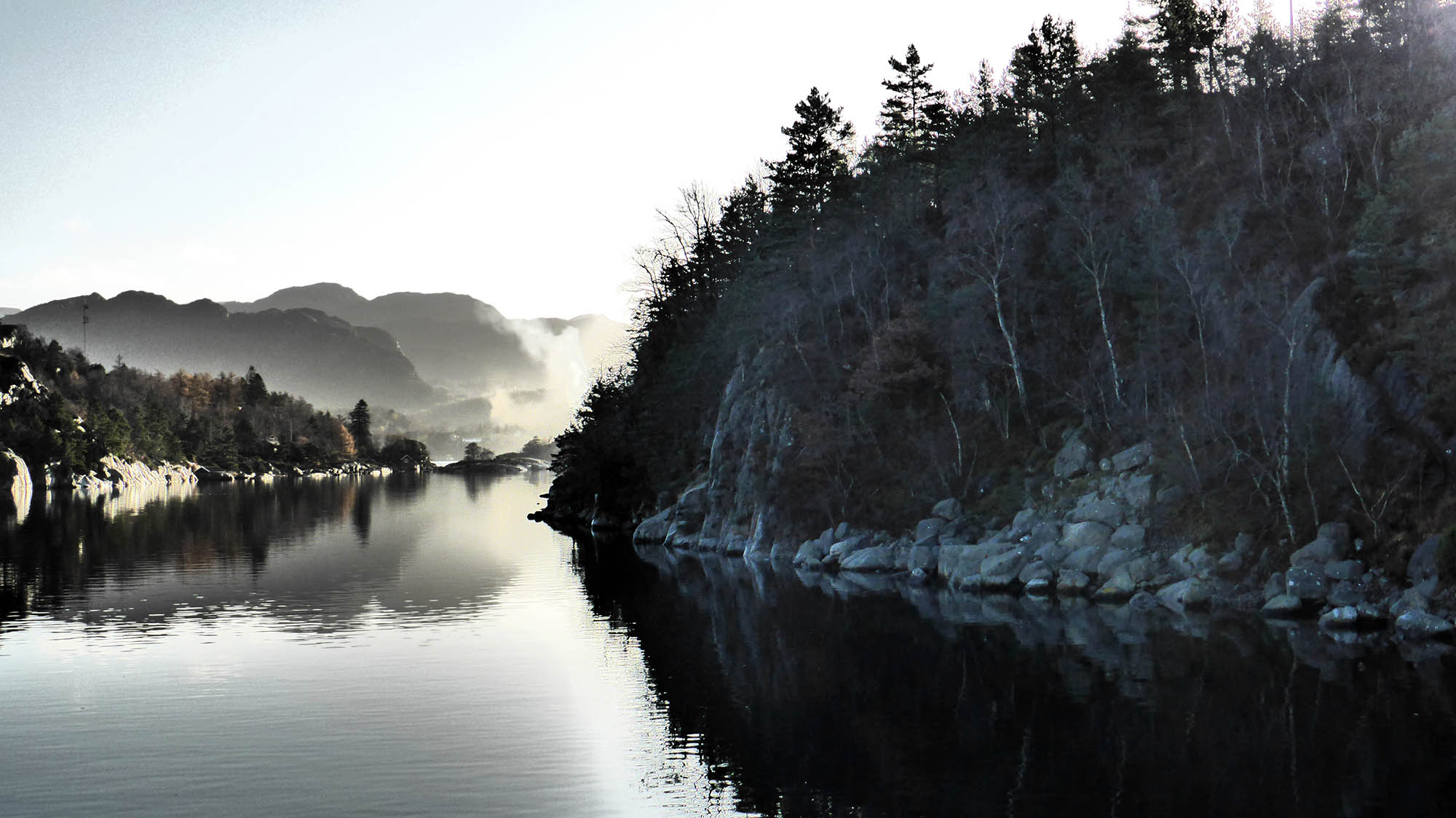
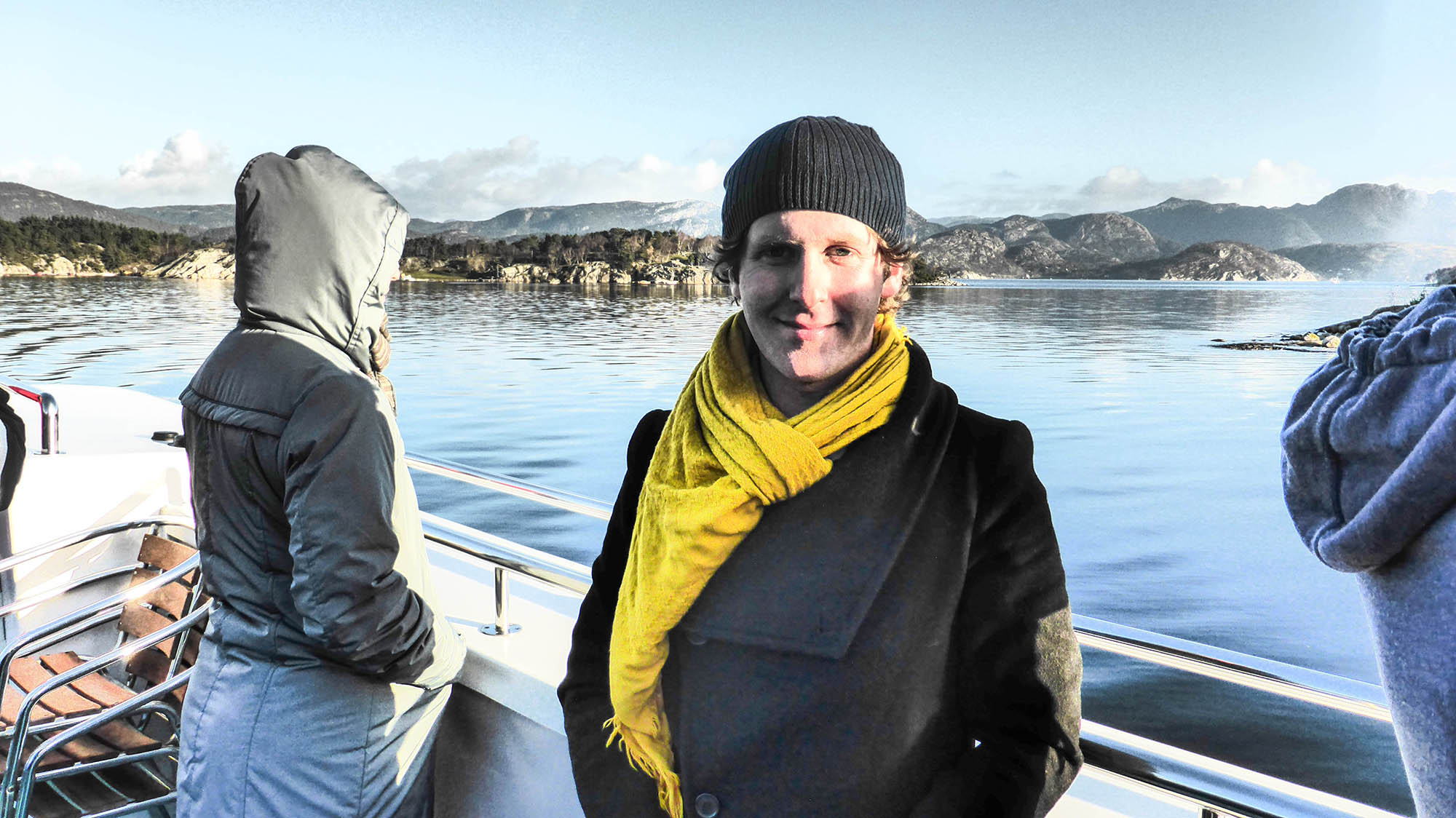
A boat trip to Lysefjord immerses you in Norway’s natural beauty without needing to break a sweat.
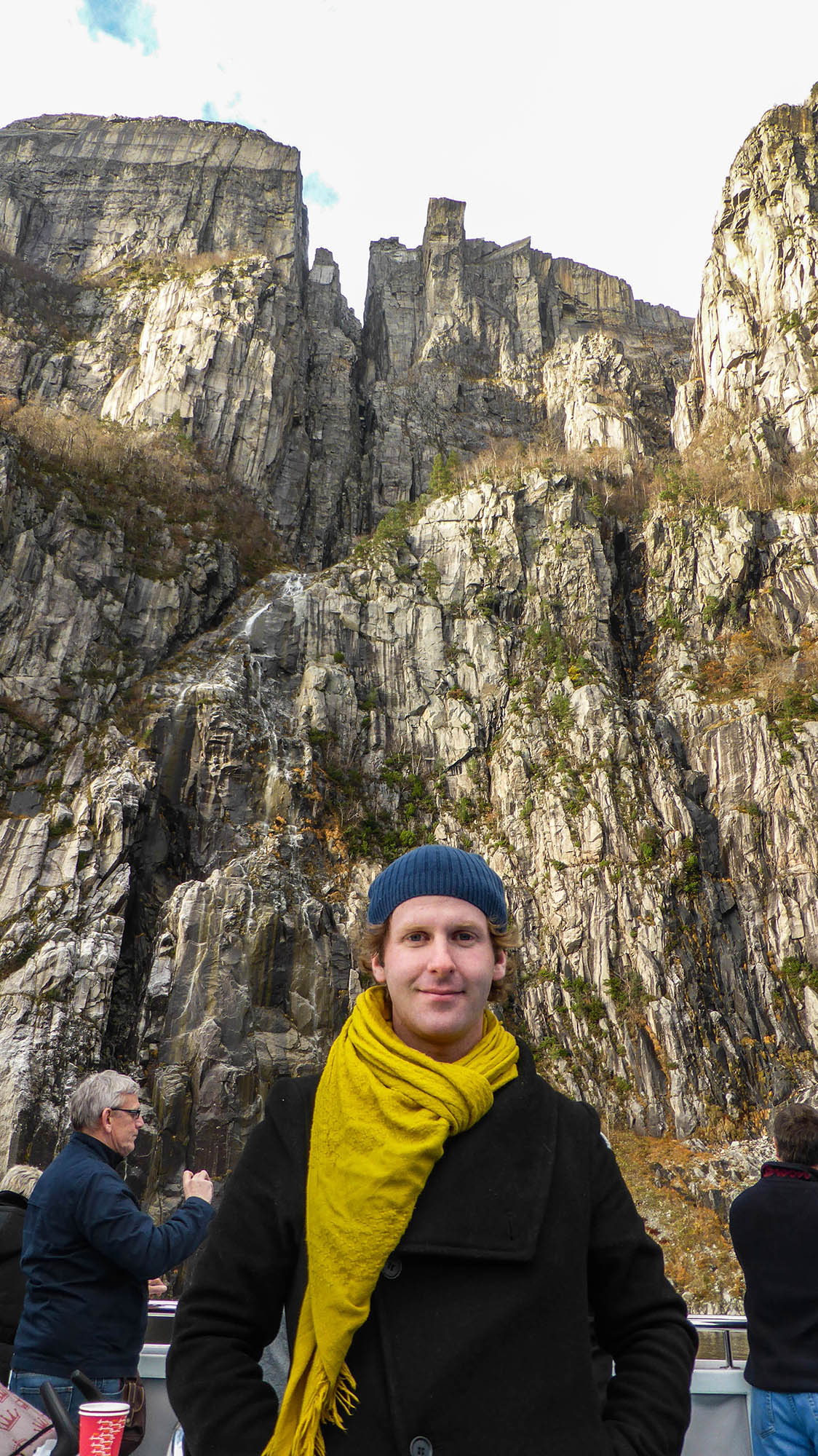
From the comfort of the boat, you’ll glide past iconic sights like the famous Preikestolen (Pulpit Rock), which towers dramatically overhead, and the thundering Hengjanefossen waterfall, where you can feel the mist on your face as the boat edges close enough to hear the roar. The serenity of the fjord is balanced by its raw power, making it a feast for the senses.
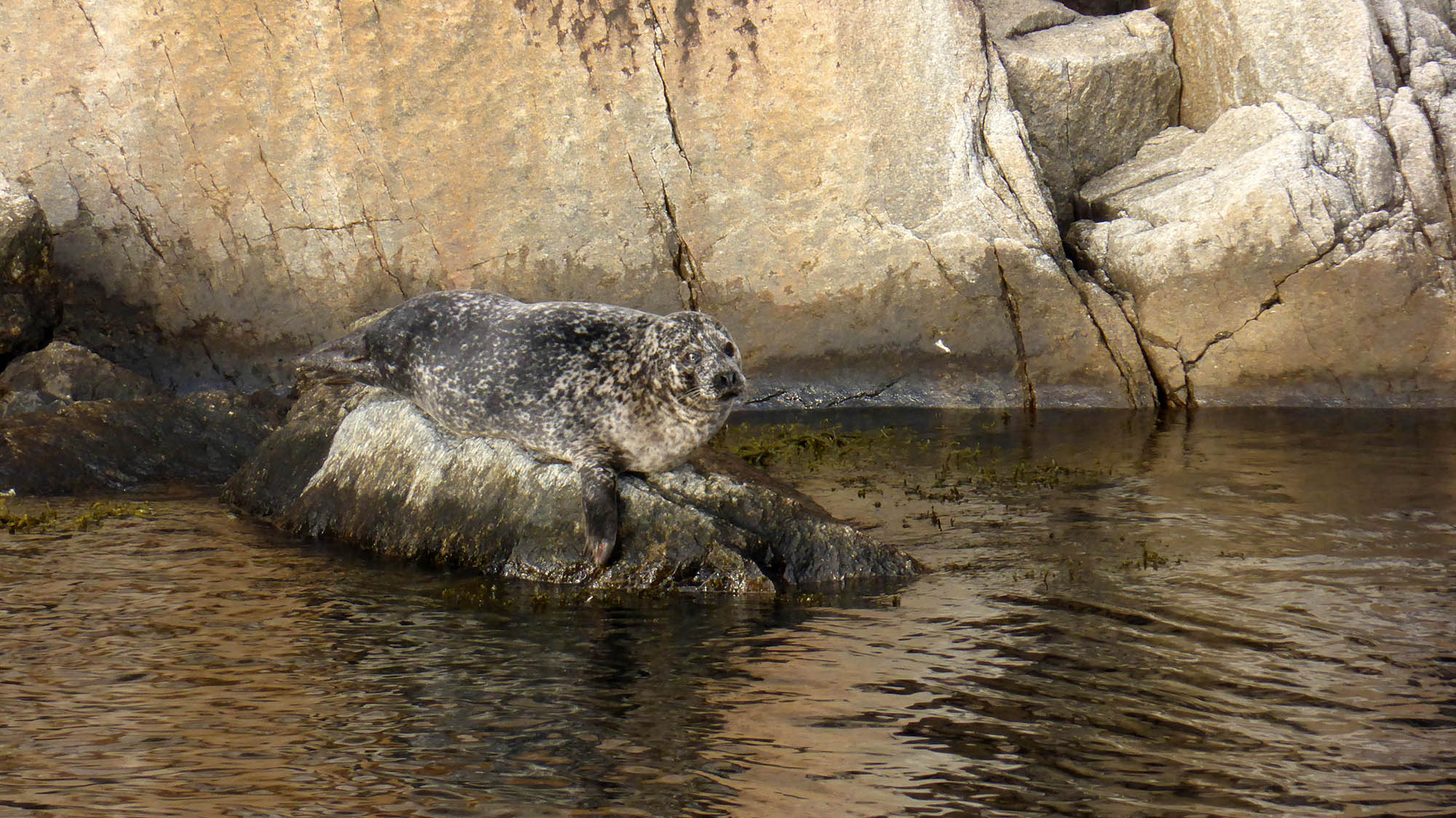
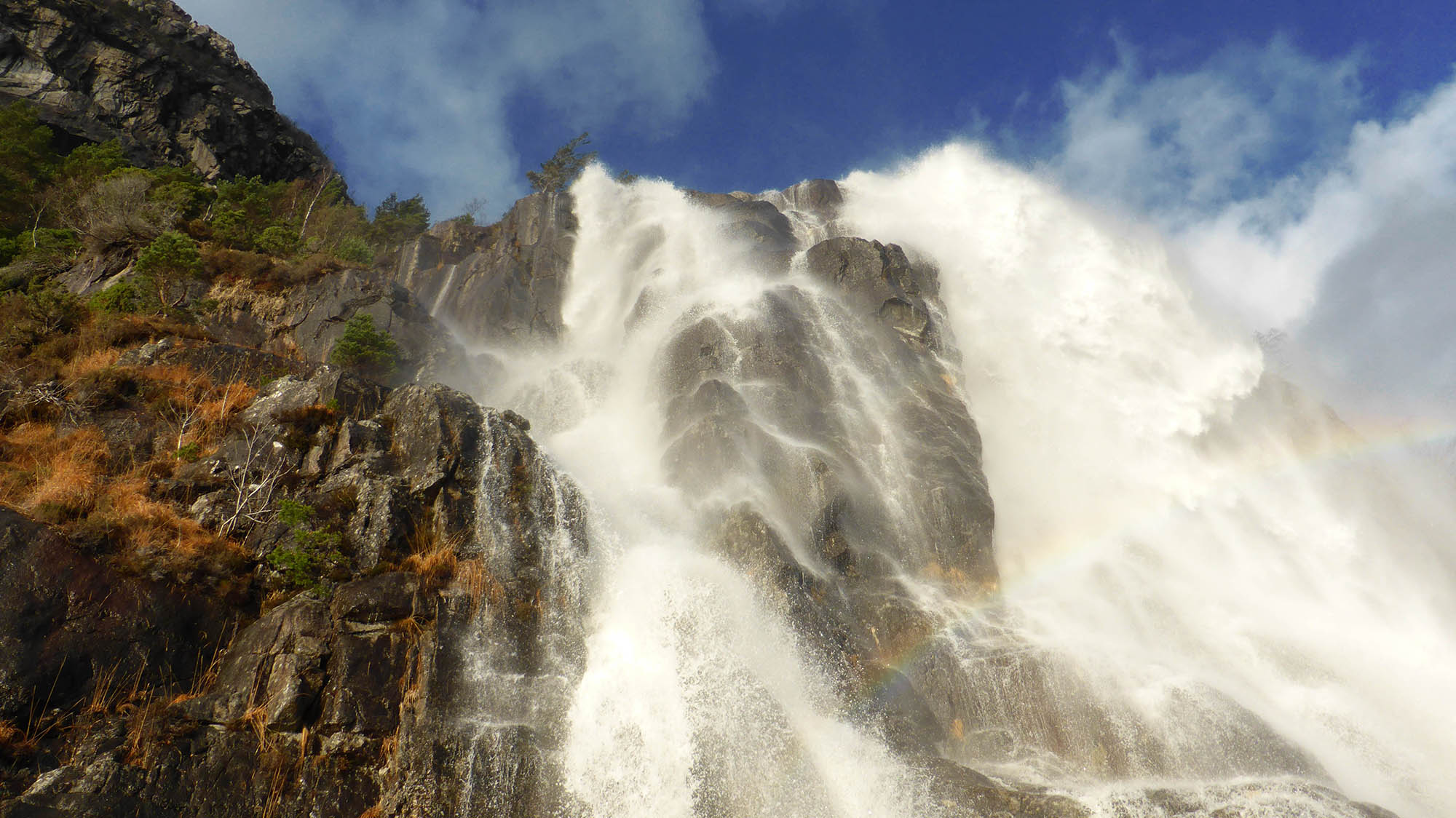
If you’re lucky, you might spot some wildlife — playful seals lounging along the shores or seabirds soaring gracefully overhead. The gentle hum of the boat engine blends with the sound of the water lapping against the fjord’s edges, creating a meditative, almost dreamlike atmosphere.
Practical Tips
- Tours: Boat trips are available year-round, but summer offers longer daylight hours and calmer weather. Look for options departing from Stavanger Harbour—many include a stop at the waterfall.
- Duration: Most tours last around 2-3 hours, giving you plenty of time to soak in the sights.
- What to Bring: A jacket, even in summer — it gets breezy on the water. Don’t forget your camera or smartphone for those once-in-a-lifetime photos.
Whether you’re traveling solo or with friends, this trip is a must-do for anyone visiting Stavanger. It’s a chance to sit back, relax, and let the fjord’s beauty remind you just how awe-inspiring nature can be.
4. Visit the Sverd i fjell (Swords in Rock Monument)
Standing on the shores of Hafrsfjord, three colossal bronze swords pierce the rocky ground, their hilts towering above like sentinels of Norway’s past. This is Sverd i Fjell, or “Swords in Rock,” a striking monument that feels straight out of a Viking legend — and for good reason.
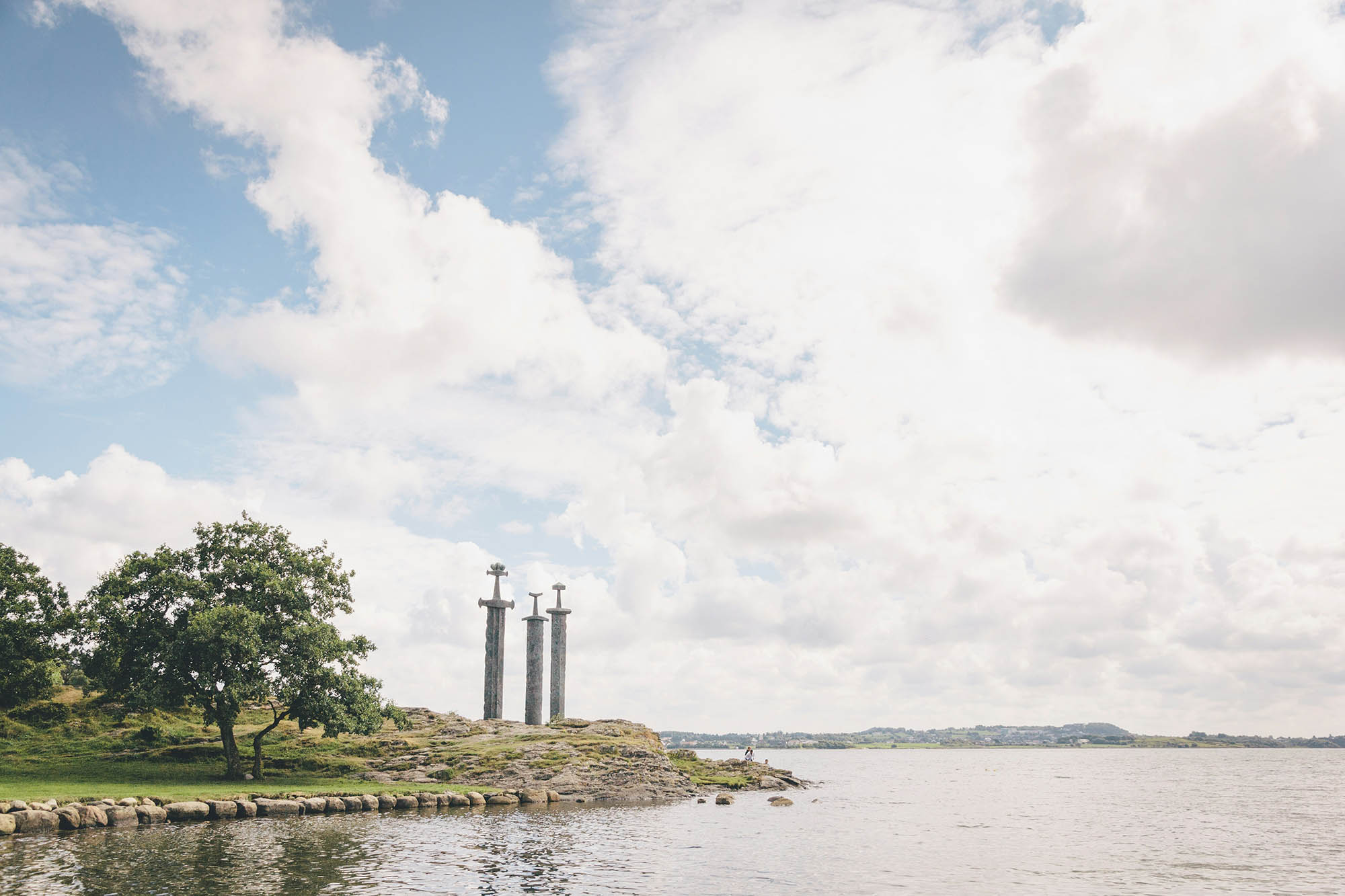
The swords commemorate the historic Battle of Hafrsfjord in 872, where King Harald Fairhair united Norway into one kingdom. Each sword tells its own story: one symbolises peace, while the others represent victory and unity. The fact that they’re embedded in solid rock serves as a powerful reminder — these values are unshakable.
What makes this spot truly special is its location. Surrounded by serene waters and lush hills, it’s the perfect place to slow down and reflect. Whether you’re snapping photos of the swords against the dramatic Norwegian sky, enjoying the tranquillity of the water, or imagining the Viking ships that once sailed here, Sverd i Fjell has a quiet magic to it.
Practical Tips
- Getting There: It’s a short 10-15 minute drive from Stavanger city centre, or you can bike 25 minutes along scenic paths.
- Best Time to Visit: Early morning or late afternoon offers the best light for photos and fewer crowds.
- What to Bring: A picnic! The area around the monument is ideal for a relaxed meal by the water.
Visiting Sverd i Fjell is about feeling connected to a moment that shaped a nation. It’s a quiet but meaningful stop for solo travellers and anyone seeking a slice of Norway’s soul.
5. Walk along the Stavanger Harbour
Stavanger Harbour is the kind of place that invites you to slow down and soak up the moment. I loved strolling along its waterfront, where colourful wooden houses stand proudly against the skyline, and fishing boats sit quietly beside towering ships, each one telling its own maritime story.
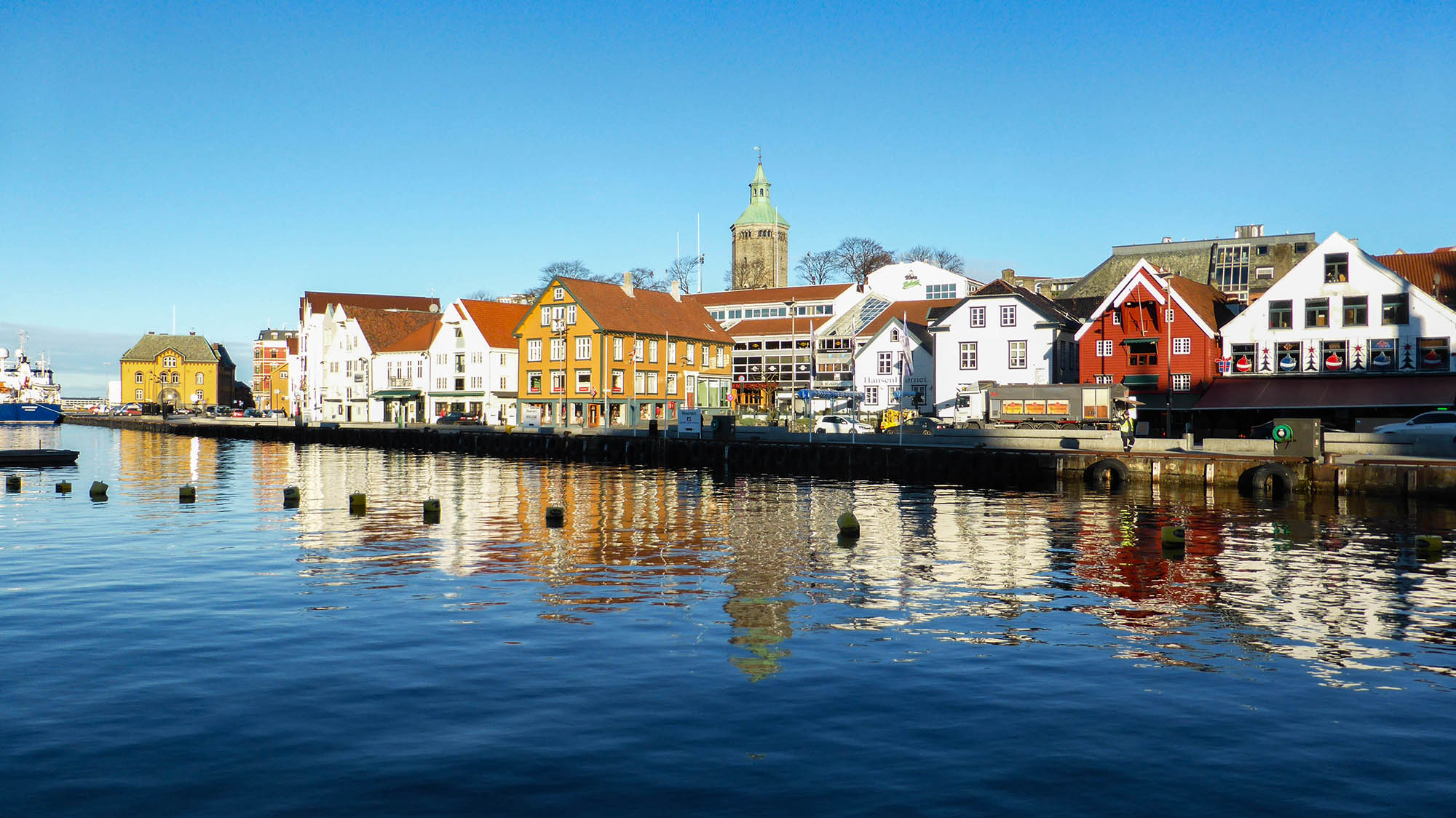
As you walk, you’ll notice how the harbour hums with life. It’s not overwhelming but has a calm energy — like the sea itself is taking a breather. One of my favourite moments was watching the light bounce off the water in the early afternoon, creating dazzling reflections that seemed almost otherworldly (you can see it in the photo above I took!).
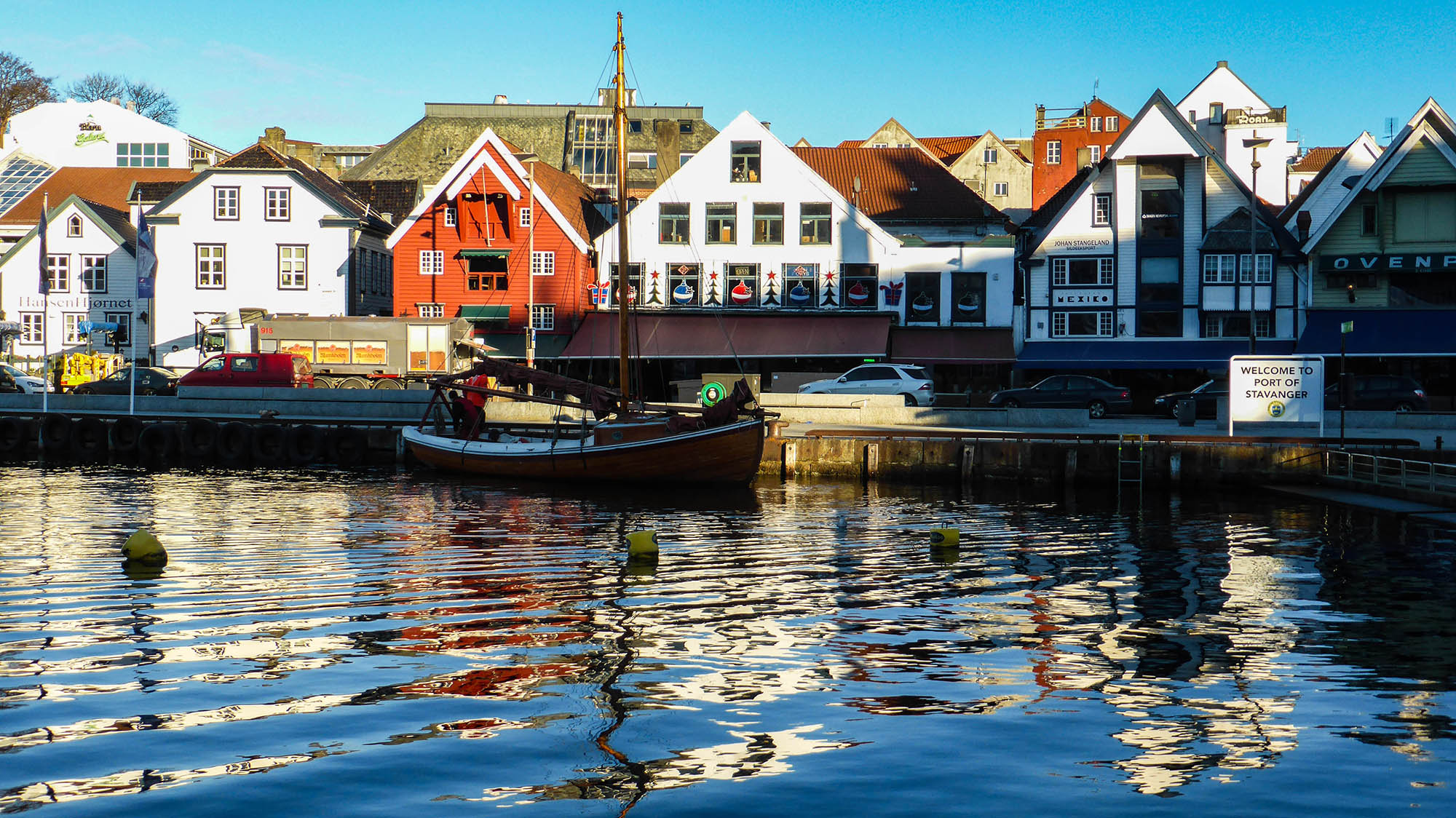
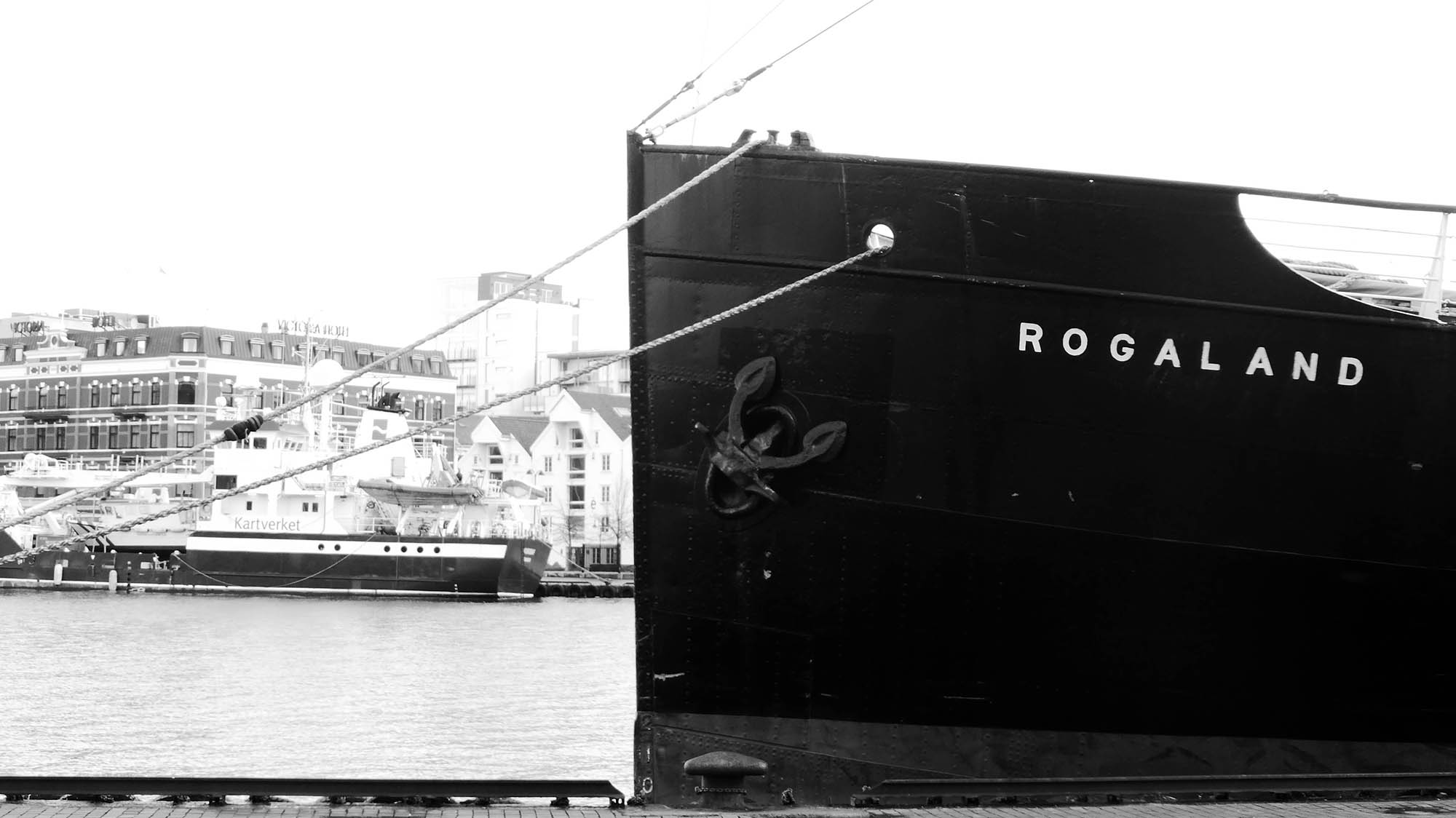
The harbour isn’t just a visual treat. It’s a place to feel the pulse of Stavanger, with restaurants, cafes, and curious sculptures scattered along the boardwalk. I stopped for a salmon meal at a cosy harbourside restaurant (the one time I splurged!).
Practical Tips
- Best Photo Spots: Look for reflections on the water near the docked boats — just like in my pictures, the play of light can be magical!
- Local History: The ship Rogaland, seen in one of my photos (above), is a piece of Stavanger’s maritime heritage and a striking backdrop for photos.
- Explore Further: Check out the signs pointing to nearby attractions like the Petroleum Museum and Gamle Stavanger (both just a short walk away, outlined below).
For me, Stavanger Harbour felt like a small slice of everyday life in Norway.
6. Stroll through Gamle Stavanger (Stavanger Old Town)
Walking through Gamle Stavanger feels like stepping into a storybook. The cobblestone streets wind gently through rows of quaint white wooden houses.
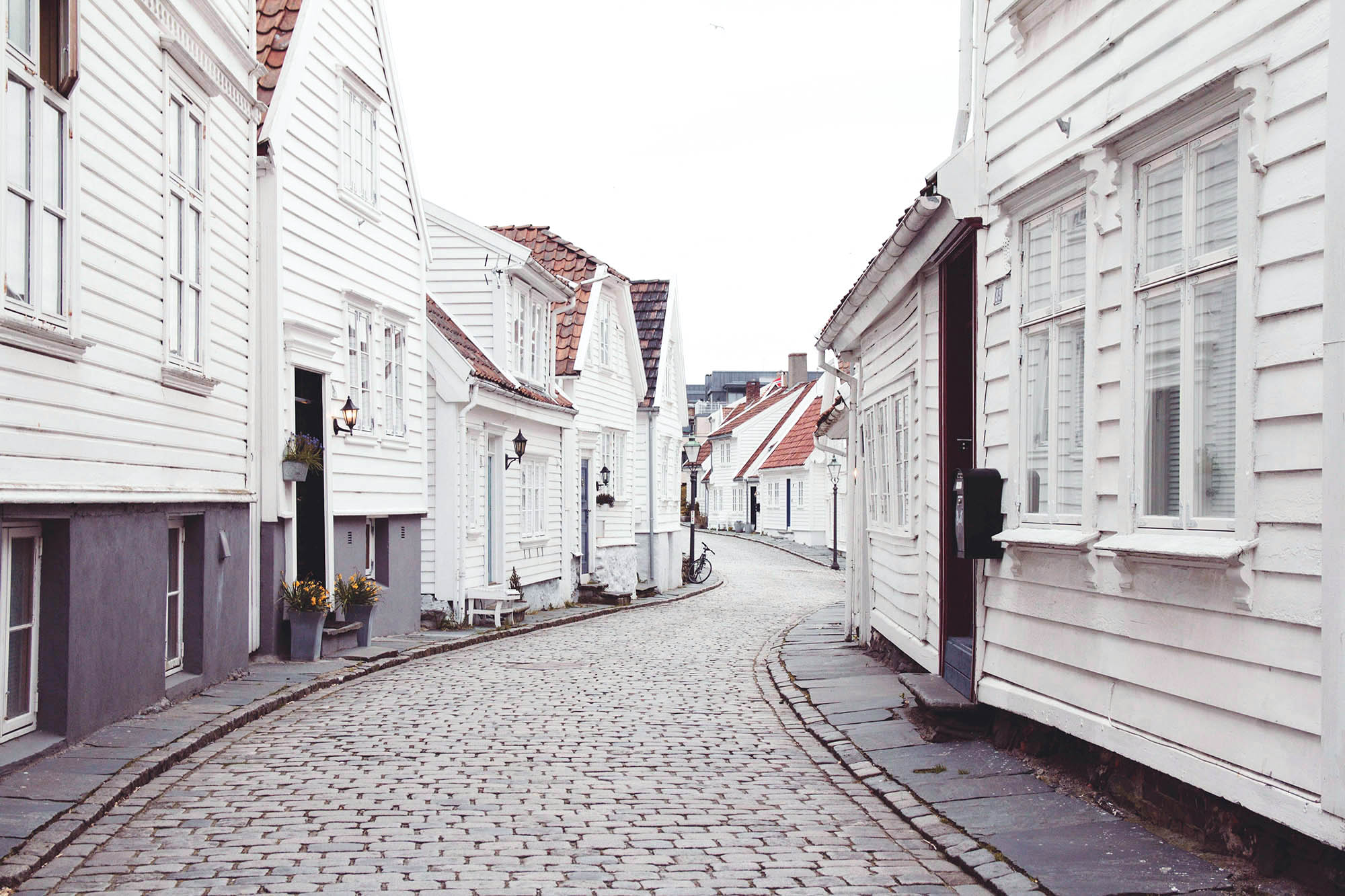
I took my time wandering here, pausing often to admire the intricate details — carved doorways, lace curtains, and even the occasional curious cat lounging on a stoop.
This preserved part of Stavanger is home to more than 170 18th- and 19th-century wooden houses, making it Europe’s largest collection of wooden buildings. Despite its historical significance, the neighbourhood feels surprisingly alive — residents still live in many of the homes, and there’s an inviting hum of everyday life.
I found it especially peaceful in the late morning, with just a few other visitors exploring alongside me. A few galleries and boutique shops are scattered throughout, though the real charm is simply in walking, soaking in the atmosphere, and letting the history of the place sink in.
Practical Tips
- Getting There: It’s just a short walk from the harbour — perfect to pair with a visit to the nearby museums or waterfront.
- When to Go: Early morning or late afternoon is ideal for quieter streets and softer light for photos.
- Don’t Miss: Look out for the artist studios and small galleries tucked between the houses. They offer a glimpse into Stavanger’s creative side.
Strolling through Gamle Stavanger gave me a sense of connection — not just to the city’s past but to the slower pace of life this neighbourhood represents; it’s an unhurried retreat into history. Whether you’re a history enthusiast or simply looking for a picturesque spot to explore, this little slice of Stavanger is a must-see.
7. Check out Stavanger’s Street Art
Stavanger might surprise you with its vibrant street art scene. Walking through the city, I stumbled upon colourful murals tucked into unexpected places — building facades, alleyways, and even the sides of staircases.

Each piece seemed to have its own personality, from abstract bursts of colour to thought-provoking portraits and playful characters. It felt like the city itself was a canvas, evolving with new creations.
Stavanger is home to the Nuart Festival, one of the world’s leading street art festivals. Every year, artists from across the globe descend on the city, transforming its walls into bold and creative masterpieces. Even if you visit outside the festival, you’ll find plenty of their works scattered across the city, blending seamlessly into Stavanger’s mix of old-world charm and contemporary culture.
One of my favourite things about exploring the street art was the element of surprise. You could round a corner and suddenly be face-to-face with a massive mural or spot a tiny, hidden piece tucked beneath a bridge. It made every stroll feel like a mini treasure hunt.
Practical Tips
- Where to Look: The areas around Øvre Holmegate (Fargegaten) and the harbour are great starting points, but street art can be found throughout the city.
- Guided Tours: If you want to dive deeper into the stories behind the art, consider joining a street art walking tour — locals often have fascinating insights into the artists and their works.
- Don’t Rush: Keep your eyes peeled; the smallest details often make the biggest impressions!
Stavanger’s street art left a vivid mark on my memory. It’s bold, creative, and reflective of a city that celebrates both tradition and innovation. If you love art or just enjoy discovering a city’s hidden gems, make sure to include this on your itinerary.
8. Stroll along Fargegaten
Fargegaten, also known as Øvre Holmegate, is Stavanger’s most colourful street and an absolute feast for the eyes. Walking along this stretch feels like stepping into a fairytale, where every building is painted in bold shades of pink, green, yellow, and blue. The cheerful colours weren’t just a random choice — local artist Craig Flannagan designed the palette to create a lively and inviting atmosphere, and it works like magic.
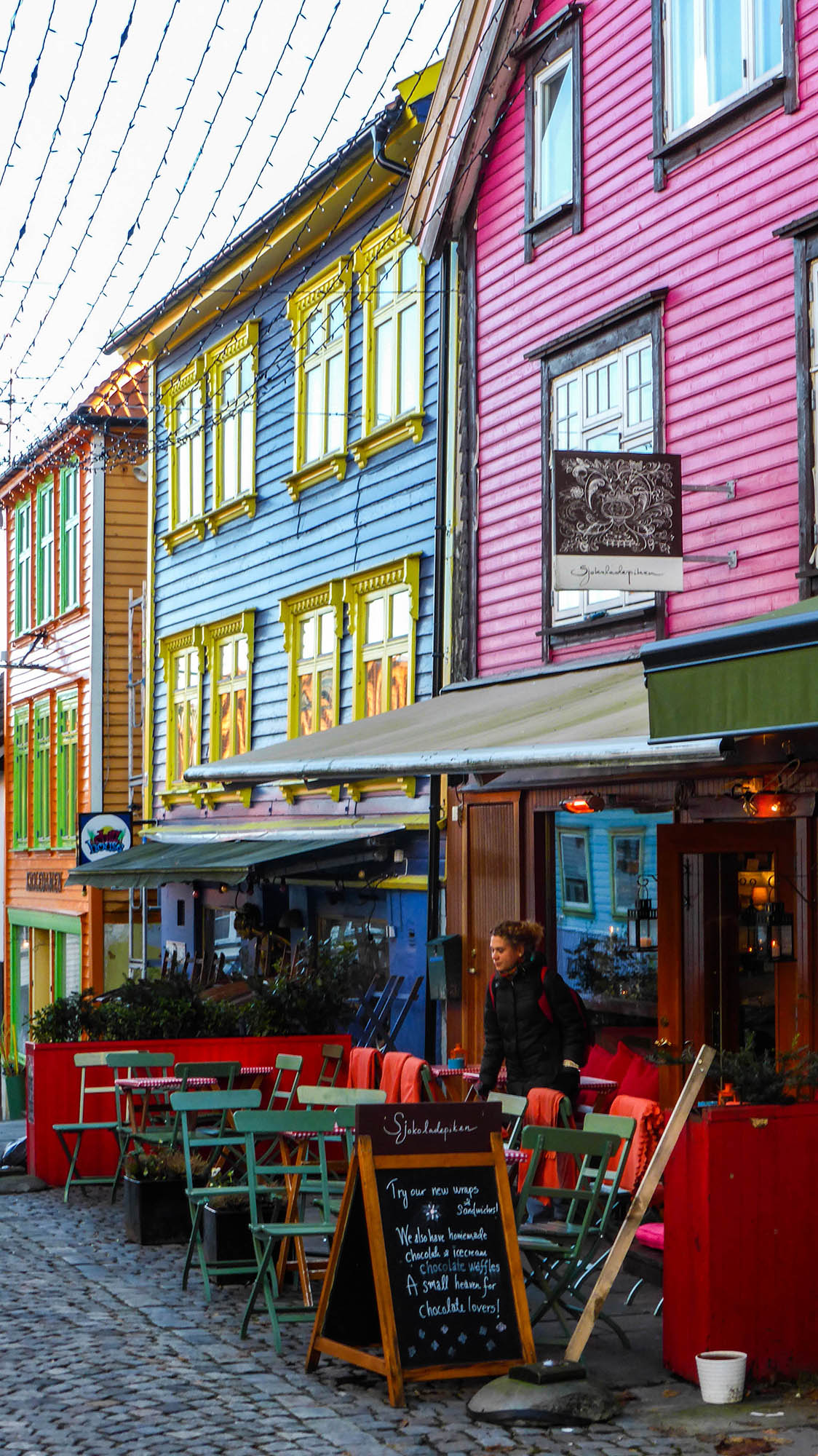
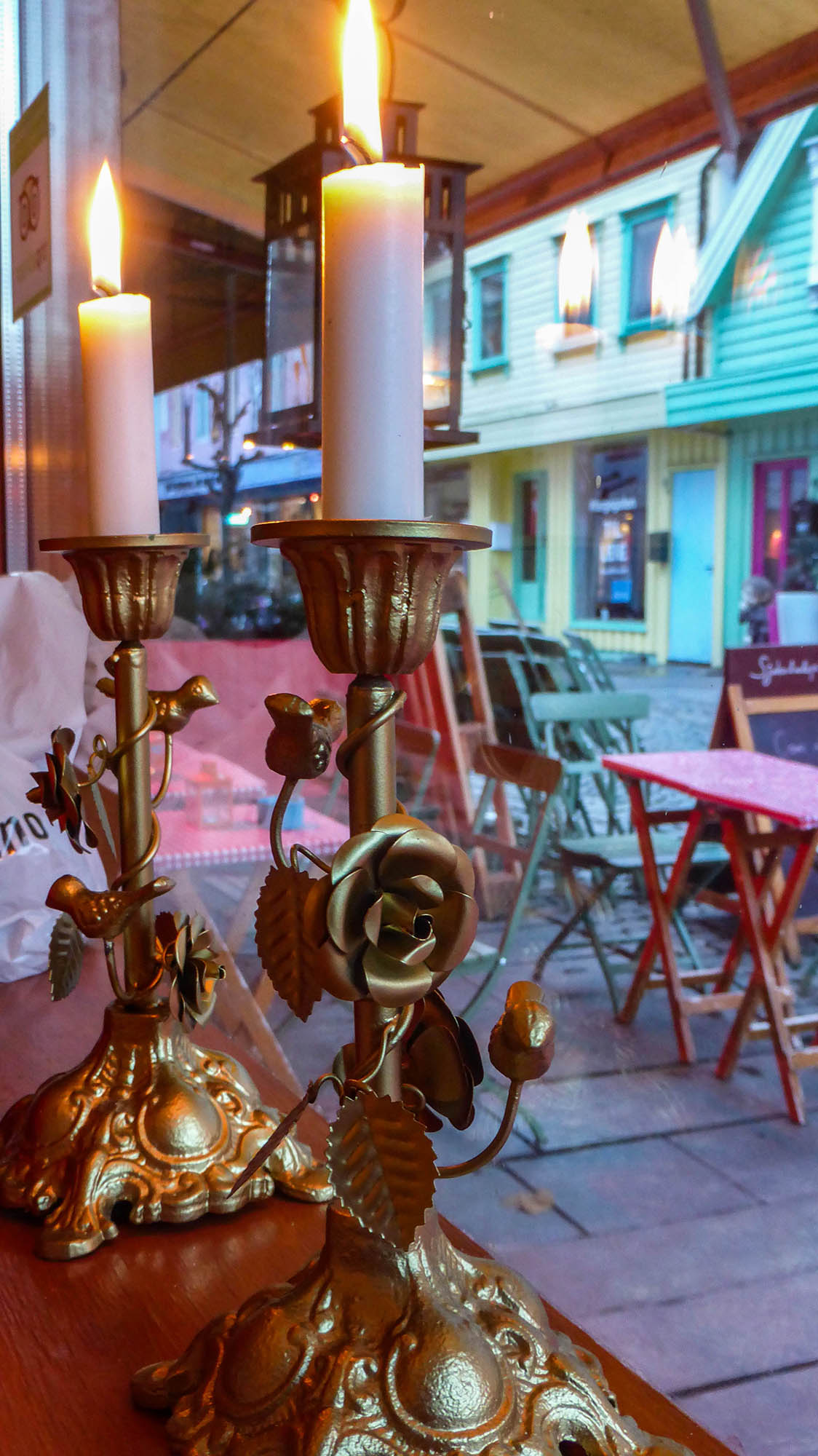
When I walked through Fargegaten, I couldn’t help but slow down and soak in the details. Quirky cafes with outdoor seating, boutique shops brimming with handmade goods, and cosy bars spill onto the street, each one with its own unique flair. It’s the kind of place where you can grab a coffee, browse for a one-of-a-kind souvenir, and people-watch to your heart’s content.
Practical Tips
- Best Time to Visit: Early afternoon is great for shopping, while the evening transforms the street into a spot for drinks under twinkling lights.
- What to Try: Stop by one of the cafes for a coffee or grab a bite at one of the restaurants — it’s a perfect way to recharge while enjoying the ambiance.
- Photo Opportunities: Every angle of Fargegaten is picture-perfect, so make sure your camera or phone is ready!
Fargegaten is a celebration of creativity and community. Whether you’re in the mood to explore or just want to sit back and enjoy the energy of Stavanger, this colourful gem is a must-see.
It’s a great place as a solo traveller to grab a coffee and people-watch.
9. Visit the Petroleum Museum
It might not be the first thing that comes to mind when you think of Stavanger, but the Norwegian Petroleum Museum is one of the city’s most unique attractions. This strikingly modern building, located right by the harbour, dives deep (pun intended) into Norway’s oil and gas industry — a key part of the country’s history and economy.

Inside, the museum offers a mix of interactive exhibits, artefacts, and displays that explain how oil exploration and production have shaped Norway. From the engineering marvels of offshore drilling platforms to the environmental challenges of the industry, the museum provides a thought-provoking look at both the innovation and impact of petroleum.
The highlight for many visitors is the replica oil platform, where you can step into the shoes of a worker and explore what life is like on one of these giant structures. There’s even a hands-on simulator that lets you try your hand at drilling — a fun challenge if you’re up for it!
Practical Tips
- Location: Situated on the harbour, it’s easy to combine this stop with a stroll through the city centre or a walk along the waterfront.
- Perfect for All Ages: The museum caters to both adults and kids, with plenty of interactive displays to keep younger visitors entertained.
- Opening Hours: Check the museum’s website before visiting, as hours may vary seasonally.
Even if you’re not an oil industry enthusiast, the Petroleum Museum offers insights into an industry that’s played a massive role in Norway’s modern identity. If you’re curious about how this small country became an energy powerhouse, it’s well worth a visit!
10. Check out the IDDIS Norwegian Graphic & Canning Museum
Tucked away in Stavanger’s historic streets, the IDDIS Norwegian Graphic & Canning Museum is a quirky, fascinating stop that combines two unlikely themes: the history of printing and the city’s rich heritage of sardine canning. It’s a place where you can dive into a lesser-known side of Stavanger’s history — and it’s a little more engaging than you might expect!
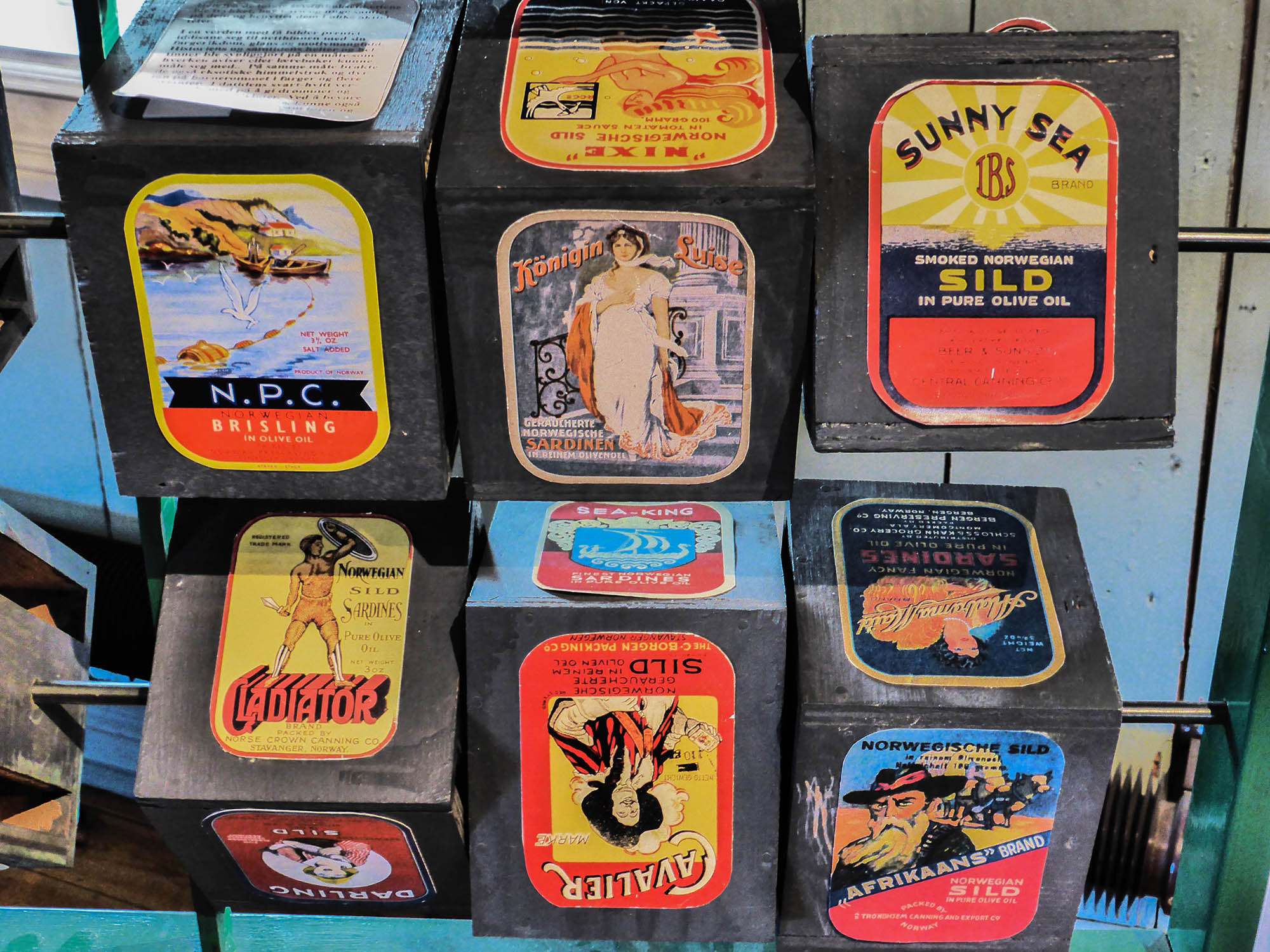
The museum is split into two sections. On the canning side, you’ll find everything from vintage machinery to hands-on exhibits showing how sardines were processed, smoked, and canned during Stavanger’s heyday as a sardine capital. The sight (and smell) of mock sardines hanging in rows over open flames gives you a vivid sense of what factory life was like.
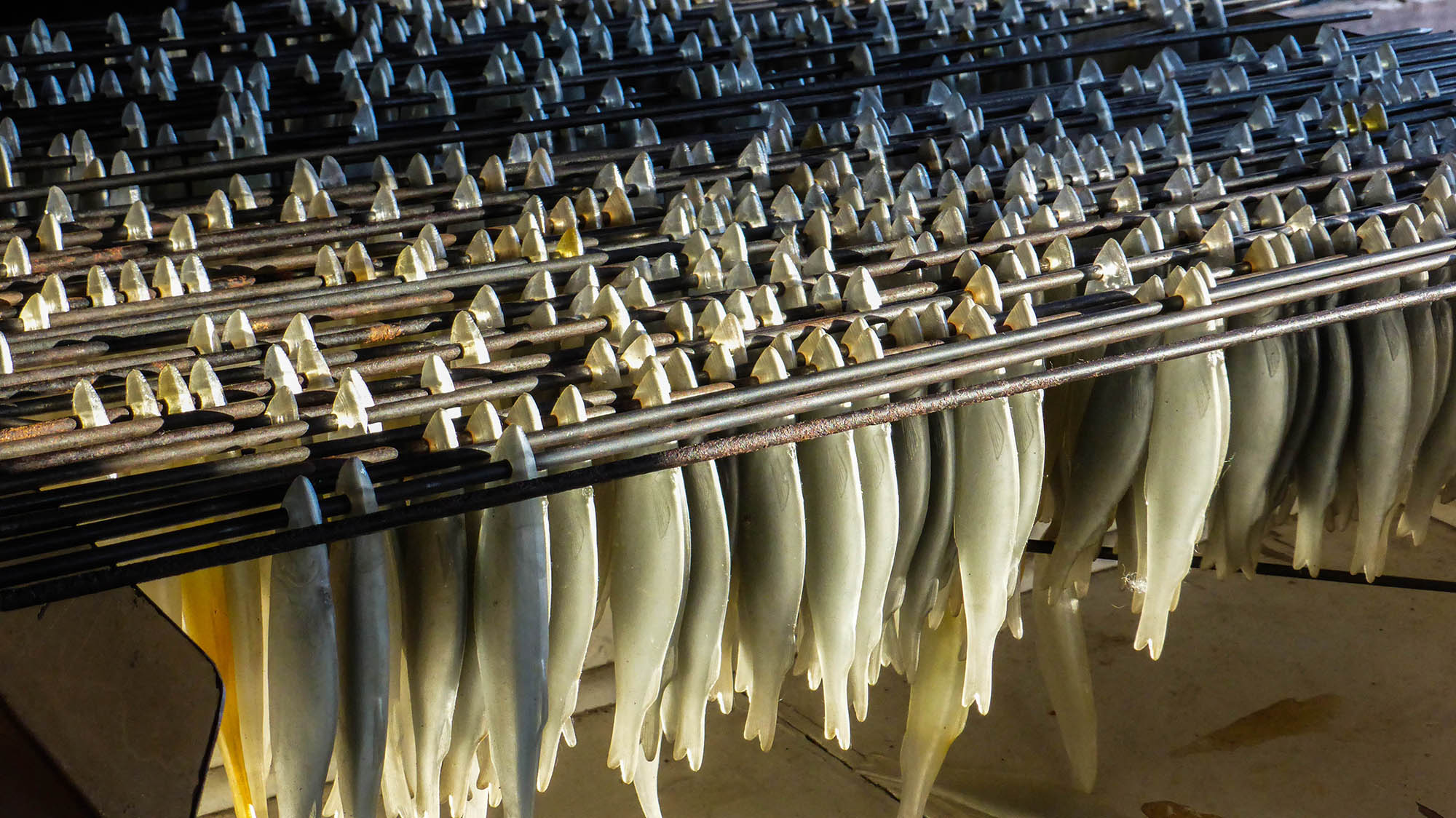
It’s a playful but educational nod to a time when the sardine industry was the lifeblood of this coastal city.
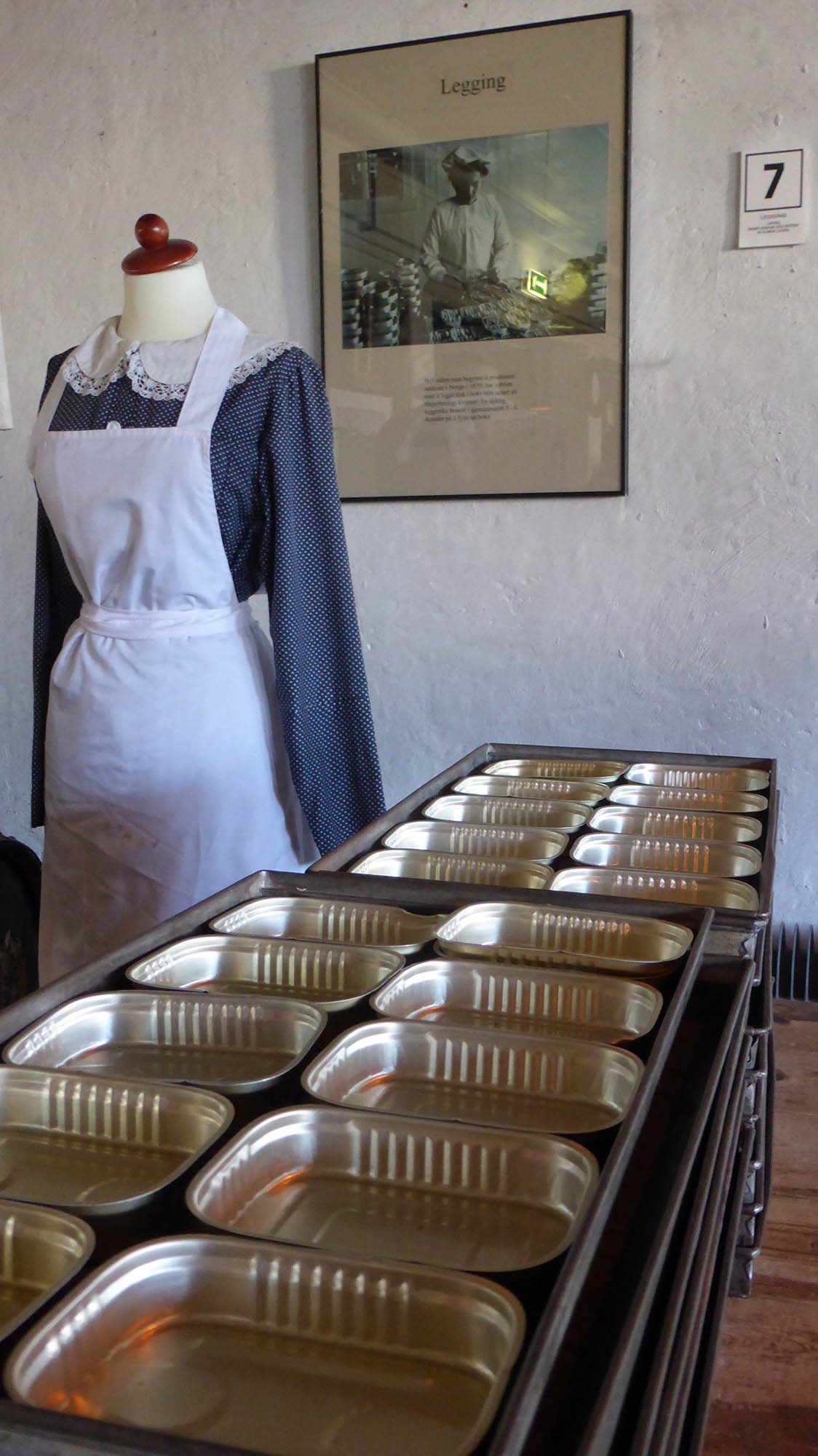
The printing section of the museum, IDDIS, highlights Norway’s graphic arts history. Here, you can explore old printing presses and see how labels for sardine cans were designed — a surprisingly artistic endeavour. Vibrant tin labels, with their retro designs and bold fonts, line the walls, showing just how much thought went into making these tiny cans stand out on shelves worldwide.
Practical Tips
- Combine It With: A visit to nearby Gamle Stavanger (above), as the museum is located in the heart of the old town.
- Best Part: Look out for demonstrations of the canning process — it’s a fun, interactive way to see history come to life.
- Good to Know: The museum is compact, so you won’t need more than an hour to explore both sections thoroughly.
Visiting the IDDIS Norwegian Graphic & Canning Museum offers a dive into Stavanger’s industrial past. It’s a chance to see how the city’s heritage is tied to creativity and craftsmanship, from humble sardines to bold graphic design. If you enjoy the offbeat and unique, this museum is well worth your time.
11. Try out a floating Sauna
If there’s one way to truly embrace Norway’s wellness culture, it’s by sweating it out in a floating sauna on Stavanger’s scenic waters. These cosy, wood-panelled sanctuaries bob gently on the water, offering breathtaking views of the surrounding landscape while you relax and detoxify in the steam.
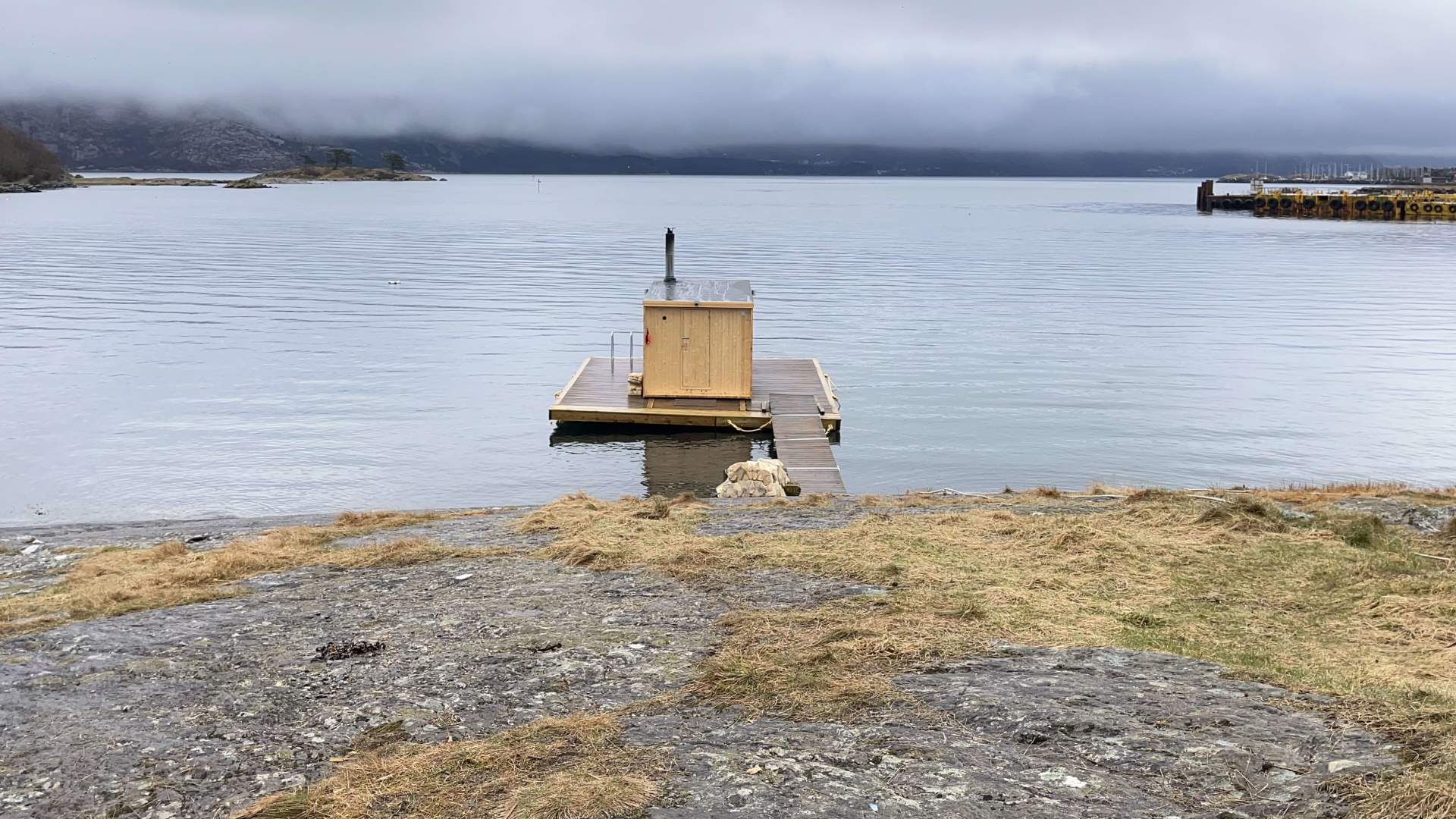
And for the bold, the experience isn’t complete without a refreshing dip in the icy water — Norwegian style.
Floating saunas are a unique blend of tradition and modernity. While saunas have long been a part of Scandinavian culture, the floating aspect adds an adventurous twist. Most saunas are communal, so don’t be surprised if nudity is the norm — it’s all about comfort and authenticity here.
Practical Tips
- Booking: Many floating saunas can be booked for private groups or joined as part of a shared session. Check availability in advance, especially during peak seasons.
- What to Bring: A towel, water bottle, and swimwear (optional depending on the group). Flip-flops and a robe are also handy for when you’re outside.
- Best Time: Winter is especially magical, with the cold air and warm steam creating a dreamy contrast.
Floating saunas offer a chance to relax and connect with Norway’s love for the outdoors - the ultimate way to recharge after a hike. Even if you’re not up for a plunge, sitting by the water with the steam rising around you is an unforgettable way to end a day of exploring Stavanger.
It’s also a great way for solo travellers to meet locals in a relaxed environment.
Top Picks for Solo Travellers in Stavanger
If you’re exploring Stavanger solo, here are the experiences I’d recommend most:
Hike to Preikestolen (Pulpit Rock): A fulfilling challenge with breathtaking views, perfect for solo adventurers seeking a rewarding journey through nature.
Take a Boat Trip to Lysefjord: A peaceful escape into Norway’s natural beauty, ideal for quiet reflection while taking in dramatic cliffs and serene waters.
Stroll Through Gamle Stavanger: Slow down and wander through the charming cobblestone streets, a perfect activity for solo travellers looking to soak in history and atmosphere.
Check Out Stavanger’s Street Art: Discover the city’s creative side while wandering at your own pace. It’s like a treasure hunt for art lovers.
Try Out a Floating Sauna: For wellness seekers, this unique Norwegian tradition offers a relaxing way to recharge, with the option of an invigorating dip.
Stavanger’s blend of nature, culture, and calm makes it a great destination for solo travellers. Whether you’re seeking adventure or peaceful moments, this city strikes the right balance.
Practical Information for Visiting Stavanger
While Stavanger is a relatively small city, having the right information makes your trip smooth and stress-free. Here are a few things you might need to know.
Getting to Stavanger
Stavanger is well-connected, making it an accessible destination whether you’re coming from within Norway or abroad.
By Air
Stavanger Airport (Sola) offers direct flights from major European cities like London, Amsterdam, and Copenhagen, as well as domestic flights from Oslo and Bergen. From the airport, it’s a 15–20-minute drive or bus ride into the city centre.
By Train
The Stavanger to Oslo train line is a scenic journey through Norway’s diverse landscapes, although it’s a longer option (about 7.5 hours).
By Car
For a road trip experience, Stavanger is accessible via the E39 highway, with spectacular views along the way.
By Ferry
If you’re travelling within Norway, ferries are a scenic option. Fjord Line operates ferries from Bergen, while there are also routes connecting Stavanger with Denmark (Hirtshals).
Getting Around Stavanger
Once you’ve arrived, navigating Stavanger is straightforward.
On Foot
The city centre is compact and walkable, with most attractions, restaurants, and the harbour within easy reach.
By Bus
Kolumbus buses operate efficiently throughout the city and surrounding areas, with tickets available via the Kolumbus app.
By Bicycle
Stavanger is bike-friendly (despite the hills), with rental bikes available at various points. It’s a great way to explore the coastline or ride to landmarks like the Sverd i fjell monument.
By Car
If you plan to venture beyond the city — to hike Preikestolen or visit Kjeragbolten, for instance — renting a car gives you flexibility. Parking in the city centre can be limited, so plan accordingly.
By Ferry
A ferry service also connects nearby islands for day trips.
Where to Stay in Stavanger
From budget options to cosy boutique hotels, Stavanger has accommodation to suit different needs.
Budget: Central Economic Stavanger Brødregata
If you’re travelling on a budget but don’t want to compromise on location, Central Economic Stavanger Brødregata has you covered. Just a short walk from Stavanger City Hall and the Maritime Museum, this hostel offers clean, simple rooms with shared facilities, plus a communal kitchen to help you save on meals.
With free WiFi and a comfortable, central vibe, it’s a practical base for exploring the city without stretching your wallet.
Mid-Range: Havly Hotell
For a comfortable midrange option, Havly Hotell combines a central location with eco-friendly charm. Just steps from Kirkegata shopping street and a short walk to Øvre Holmegate and the Old Town, it’s perfectly placed for exploring Stavanger.
While the facilities are simple, you might appreciate the large flat-screen TV, tea and coffee maker, and friendly staff who are happy to share local tips.
High End: Hotel Victoria
For a touch of timeless elegance, Hotel Victoria is a standout choice in Stavanger. Set in a stunning Victorian-style building overlooking Vågen Bay, this waterfront hotel combines historic charm with modern comforts.
The classically decorated rooms feature plush seating areas, minibars, and lovely bay views. With its chic cocktail bar and proximity to Old Stavanger and the Norwegian Petroleum Museum, Hotel Victoria offers a high-end stay in the heart of the city.
Local Tips for Visiting Stavanger
Travelling is about more than just seeing the sights — it’s about understanding and connecting with the local culture. Here are some insider tips to help you navigate Stavanger and make the most of your experience.
Sunday Closures
Sundays in Norway are traditionally a day of rest, and you’ll notice this in Stavanger. Many shops and smaller restaurants may be closed, though larger supermarkets and tourist-focused establishments often remain open. Use Sundays for outdoor activities or visits to attractions like the Petroleum Museum, which stays open.
Tap Water is Safe and Delicious
Norwegian tap water is some of the cleanest in the world, so save money by refilling your reusable water bottle instead of buying bottled water. Many restaurants and cafes will happily refill your bottle if you ask.
How to Understand Nords and Engage With Them
Norwegians, sometimes called "Nords," are known for their calm and polite demeanour, which might come across as reserved. However, beneath that quiet exterior, they’re genuine, especially once you take the time to build a connection.
Here’s how to understand and engage with locals in Stavanger (from my experience).
1. Respect Their Personal Space
Norwegians value their personal space and might not initiate small talk with strangers. Don’t take it personally — it’s just their way! However, if you strike up a conversation politely, they’ll likely respond warmly.
2. Learn a Few Norwegian Phrases
Even though nearly everyone speaks English, a few Norwegian phrases can go a long way. A friendly “takk” (thank you) or “hei” (hello) can break the ice.
3. Appreciate Their Love for Nature
Nords have a deep respect for nature, so conversations about hiking, the outdoors, or sustainability are sure to resonate. If you’re on a hike and pass locals, a nod or a simple “hei” is customary.
4. Join Their Love of Quiet Confidence
Norwegians tend to be modest and dislike showing off. Keep your interactions grounded and genuine. They appreciate meaningful conversations over surface-level chatter.
5. Engage with Their Dry Sense of Humour
Norwegian humour is often subtle and dry. If a local makes a wry comment, don’t be afraid to laugh — it’s a sign they’re comfortable around you.
6. Understand the ‘Janteloven’
The concept of janteloven (Law of Jante) reflects humility and egalitarianism in Norwegian culture. It’s not about standing out but being part of the community. Show respect for this cultural value, and you’ll gain trust.
7. Ask About Local Recommendations
Norwegians love sharing their favourite hiking trails, cafes, or spots off the beaten path. Don’t hesitate to ask locals for tips — they might steer you toward something special that’s not in the guidebooks.
8. Respect the Quiet
Norwegian cities like Stavanger are calm and peaceful, with an emphasis on low noise levels. Whether you’re walking in town or exploring natural areas, keeping your voice down and embracing the stillness will show your respect for local norms.
Weather and What to Expect in Stavanger
Stavanger’s weather, like much of coastal Norway, is influenced by the Gulf Stream, giving it milder winters than other places at similar latitudes. However, the city’s maritime climate can also mean quickly changing conditions, so it’s always wise to dress in layers.
Summer (June to August)
- Temperature: Mild, averaging 15-20°C (59-68°F).
- Daylight: Long days with up to 18 hours of daylight — perfect for squeezing in extra adventures.
- What to Expect: Summer is the best season for outdoor activities like hiking to Preikestolen or taking a boat trip through Lysefjord. The weather is usually pleasant, but rain showers can happen anytime, so a lightweight, waterproof jacket is essential.
- Pro Tip: Pack comfortable walking shoes, sunglasses, and a reusable water bottle for your adventures.
Winter (December to February)
- Temperature: Chilly, averaging 0-5°C (32-41°F).
- Daylight: Short days with around 6-7 hours of light, but the soft, low-angled sunlight is magical for photography.
- What to Expect: Winter is a quieter time in Stavanger. The snow-dusted hills and cosy cafes make for a serene experience. Indoor attractions like the Petroleum Museum or IDDIS Canning Museum are great options for colder days. Don’t miss the chance to try a floating sauna, where the steamy warmth contrasts beautifully with the icy winter air.
- Pro Tip: Bring warm, waterproof boots, insulated layers, and a scarf or hat. You’ll stay comfortable whether you’re wandering the harbour or exploring Gamle Stavanger.
Spring (March to May) & Autumn (September to November)
- Temperature: Cool, ranging from 5-15°C (41-59°F).
- What to Expect: These shoulder seasons bring fewer crowds, making them ideal for solo travellers seeking tranquillity. In spring, you’ll see flowers blooming around Gamle Stavanger, while autumn showcases vibrant foliage along hiking trails. Be prepared for unpredictable weather — sunshine one moment and rain the next.
- Pro Tip: A windproof jacket and an umbrella can be your best friends during these seasons.
FAQ About Things to Do in Stavanger
Here’s a quick guide to address common questions about visiting this charming Norwegian city.
When is the best time to visit Stavanger?
The summer months (June to August) are the most popular, offering long daylight hours, mild weather, and open hiking trails. It’s the perfect season for outdoor adventures like Lysefjord boat trips and hikes to Preikestolen.
Winter (December to February) has its own allure, with fewer crowds, cosy indoor attractions, and picturesque snowy landscapes. If you prefer a quieter vibe and don’t mind chilly weather, winter could be your ideal time.
Is Stavanger safe for solo travellers?
Absolutely! Norway is one of the safest countries in the world, and Stavanger is no exception.
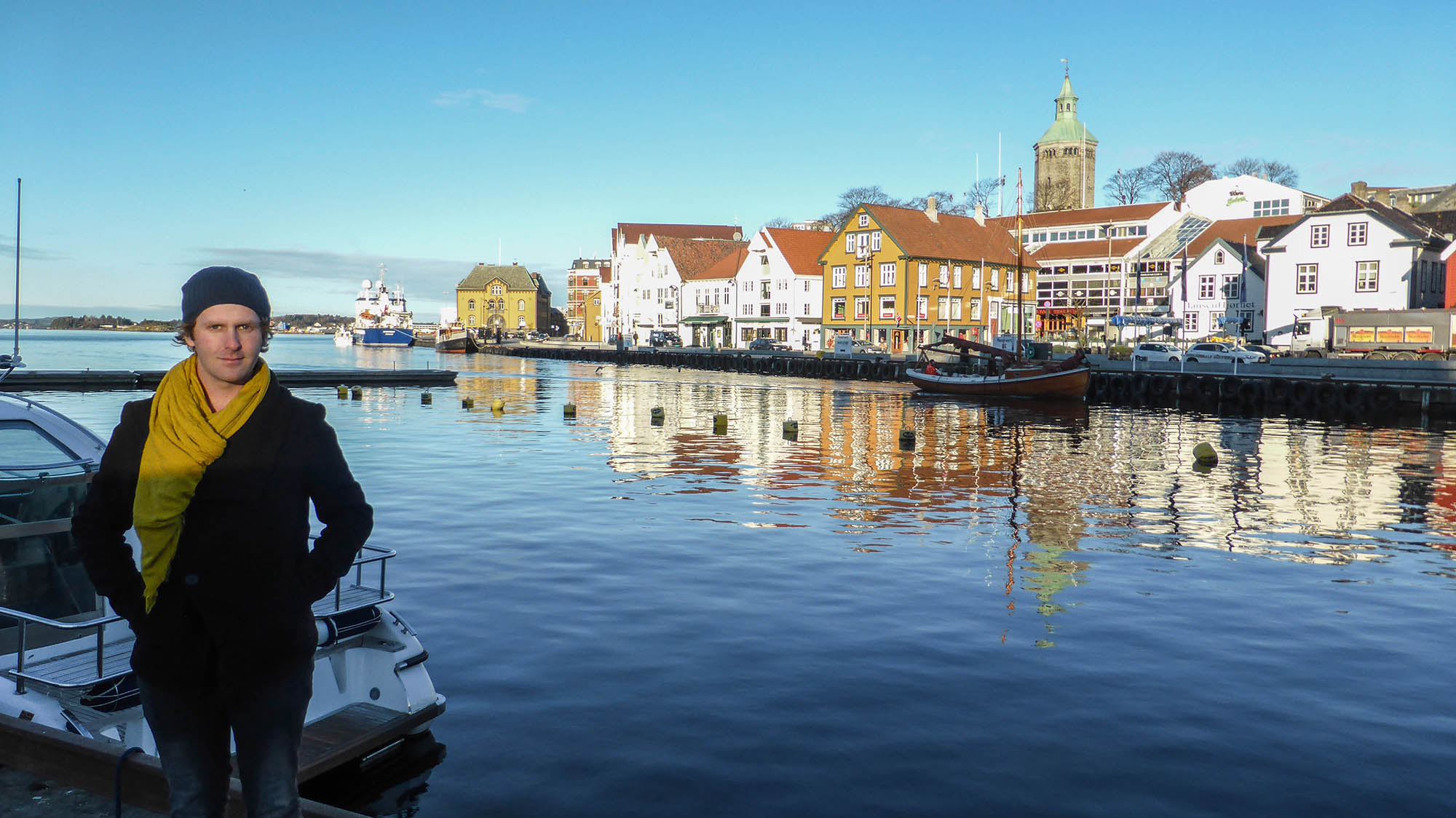
Its compact size, walkable streets, and friendly locals make it an excellent destination for solo adventurers.
How expensive is Stavanger?
Like most of Norway, Stavanger is on the pricey side. Food, accommodation, and activities can be expensive compared to other European cities. However, there are ways to save money:
- Opt for hostels or budget hotels;
- Shop at grocery stores and cook your own meals; and
- Take advantage of free or affordable activities, like walking tours or hiking trails.
What should I pack for Stavanger?
Weather in Stavanger can be unpredictable, so layers are your best friend. Here’s a packing checklist:
- Comfortable walking shoes (and hiking boots if you plan to hike);
- A waterproof jacket and umbrella/poncho for sudden rain showers;
- Insulated layers if you’re visiting in winter (thermals highly recommended);
- A reusable water bottle (the tap water is safe and delicious!); and
- A camera or smartphone for all the stunning photo opportunities.
Can I see the Northern Lights in Stavanger?
It’s rare to see the Northern Lights this far south. However, if you visit during the aurora season (September to March) and the conditions are just right — clear skies and strong solar activity — you might get lucky. For better chances, consider heading further north to Tromsø or Alta.
Conclusion: Things to Do in Stavanger
Stavanger may be small, but its blend of natural beauty, unique history and cultural intrigue makes it a destination that leaves an impression. Whether you’re standing on the edge of Preikestolen, strolling through the colourful streets of Fargegaten, or soaking in the tranquillity of its fjords, this coastal city offers moments that feel both grand and personal.
For solo travellers, Stavanger is a place where you can move at your own pace — embracing adventures in the wild one day and quiet contemplation by the harbour the next. It’s a city that doesn’t demand to be rushed but instead encourages you to connect — with its landscapes, its history, and maybe even a little more deeply with yourself.
If you’re ready to explore a destination that’s both comforting and inspiring, Stavanger is waiting for you. Pack your sense of adventure, and don’t forget to take it slow. Happy travels!
